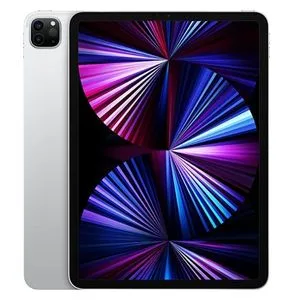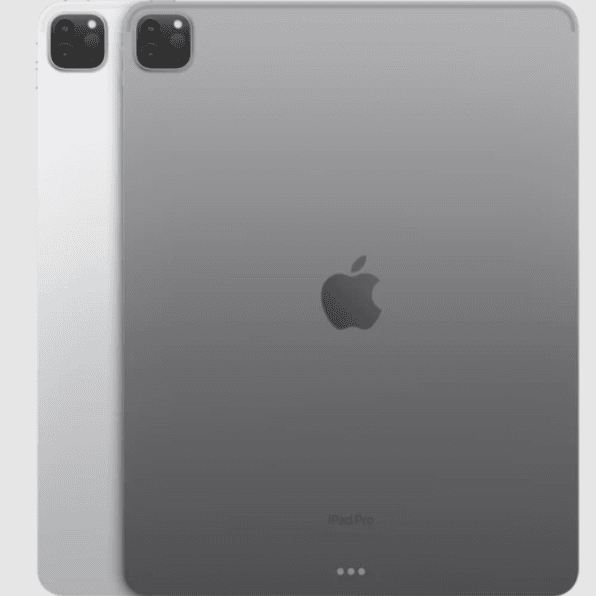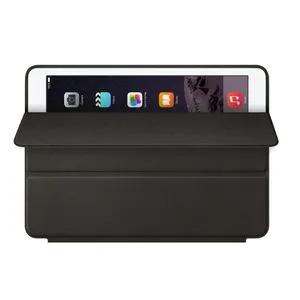Apple iPad Pro 6th Gen review: Pro power at pro prices
Summary
Quick verdict: The power of the M2 chip and iPadOS 16 do make the iPad Pro 6th Gen a compelling creativity device, but only if you really specifically need the workflow afforded with a touch and Apple Pencil interface – and if you can afford it.
- M2 plus iPadOS 16 does make it a productivity powerhouse
- Mini LED display is gorgeous
- iOS 16 optimisations bring it closer to being a “real” laptop device
- Extremely expensive, even compared to MacBook alternatives
- Overkill for a lot of users
- Poor battery life compared to an M2 MacBook
Apple's updated iPad Pro, available in either 12.9-inch premium version or slightly less fancy 11-inch size, has one of the simplest upgrade arguments I've seen on a product in years.
Apple's swapped out the M1 processor found in its 5th Gen counterpart for an M2 processor, with the expected performance boosts that we've already seen from the shift in M1 to M2 processors within MacBooks.
Otherwise the value proposition remains remarkably similar. The iPad Pro line is pitched as a creative tablet with lots of processing grunt, and that remains absolutely true.
If you've got a workflow that runs optimally based around the Apple Pencil and touch gestures, then the iPad Pro could be your perfect portable work machine.
However, it's a work machine that comes with a serious price premium, even against other M2-equipped Apple gear, and if your interest in tablets is only lightly on the productivity side, it's total overkill.
Buy iPad Pro products
Design: Apple still saves the best screens for the biggest model
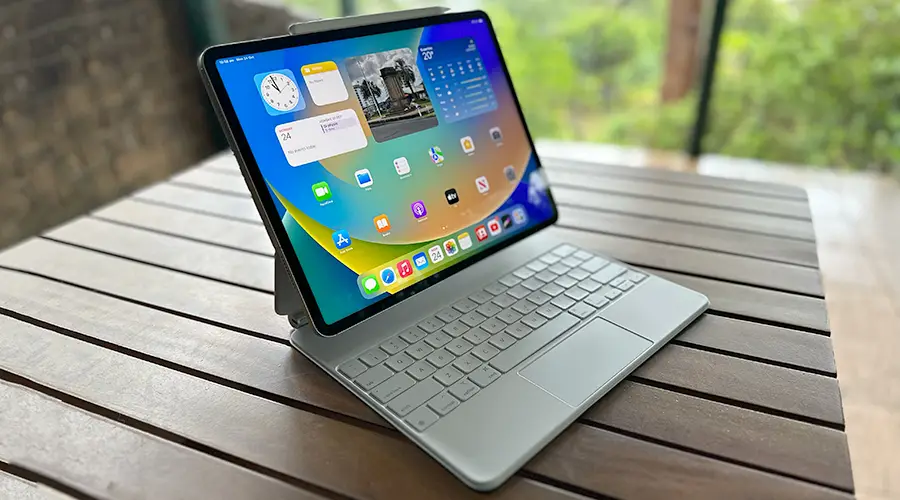
Image: Alex Kidman/Finder
The Apple iPad Pro 6th Gen's new selling points aren't really in terms of its design, where very little has changed between generations. While the new 10th Gen iPad comes in a range of 4 colours, the iPad Pro line sticks to the traditional Space Grey or Silver options only.
You've still got the choice between the larger 12.9-inch model with its 2732x2048 pixel Mini-LED display – or in Apple-speak, "Liquid Retina XDR" – or the smaller 11-inch 2388x1668 pixel "Liquid Retina" LED backlit IPS display.
Mini-LED is nice, and there's clearly a market for folks who need to do a degree of colour grading or similar for their creative works.
For more mainstream users you'll more notice the difference in screen size than you will specifically pick the technical differences. It does still feel like Apple's keeping the best goodies for the plus-sized iPad Pro, especially at the kind of prices it wants for these models.
From a connection standpoint you can opt for Wi-Fi or Wi-Fi+Cellular. It's great that the iPad Pro 6th Gen incorporates Wi-Fi 6E for wireless connectivity, but it's still something of a pain point to me that the Cellular option is 5G, but for sub-6Ghz frequencies only. If you're going to ask for iPad Pro money, Apple, why not deliver fastest possible 5G speeds?
On the connectivity front you're still working with a single USB C port used for both power and peripheral connectivity.
It's Thunderbolt 4 ready so should work with most USB C peripherals, though Apple never strictly specifies that it will work with any particular peripheral. With its one-at-a-time scheduling, it's still limited in this way relative to a full sized productivity laptop, including Apple's own MacBook Air or MacBook Pro models.
Performance: M2 plus iPadOS 16 finally cracks the productivity puzzle
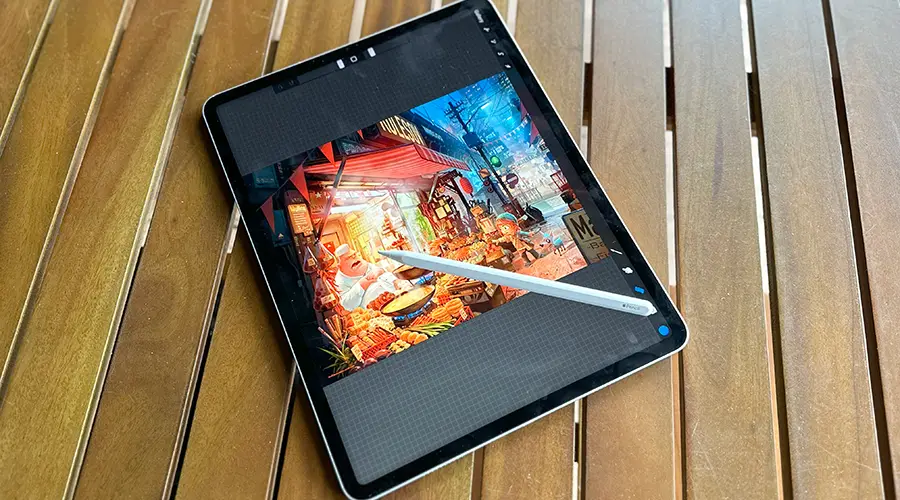
Image: Alex Kidman/Finder
The big news for the Apple iPad Pro 6th Gen lies behind the screen, whether you opt for the 12.9-inch model I've reviewed or the smaller 11-inch model.
That's because Apple's stepped up to include its M2 Apple Silicon to run the whole show, in the same way that it does for the M2-capable MacBook Air and 13-inch M2 MacBook Pro right now.
M2 is very powerful, and I was curious to see how that would compare against the existing M1 models, as well as the M2 capable MacBooks, because they all play in the premium price space.
Here's how the Apple iPad Pro 6th Gen compares using Geekbench 5's CPU test:
That level of power is interesting, because it puts it on a par with the M2-enabled MacBook Air. This once again opens up the argument about whether or not an iPad Pro is a full productivity "computer", or more of an artistic "tablet" device.
With the improvements in iPad OS 16, most notably stage manager, I'm starting to see Apple's point here, albeit with the caveat that to get that comparable laptop performance, you've got to spend even more money.
Apple loaned me a 12.9-inch Magic Keyboard for iPad Pro and a 2nd Gen Apple Pencil, and in combination they can make for an impressive and very capable production platform.
Whether a suitably equipped MacBook Air/Pro makes more sense at that point will largely come down to workflow. Do you optimally need touch/stylus level control, or is deeper file system and independent app development more important to you?
It's more of a complex puzzle than it used to be given that any Apple Silicon MacBook can run a lot of iPad apps – not quite all, because developers can block that – but no MacOS apps run on any iPad Pro.
The difference that the Stage Manager side of affairs makes is that it does make it substantially easier to start really pushing that M2 chip in a way that was technically feasible but more convoluted beforehand.
I can easily have 2 apps with proper floating windows working side by side on the 12.9-inch display in a way that I'd expect out of a desktop computer, rather than the more forced split screen/floating app arrangement under prior iPadOS versions.
The M2 can handle most of this, with the one caveat being that not every app plays nicely in this style depending on its own windowing needs.

Image: Alex Kidman/Finder
Getting the iPad Pro 6th Gen kitted out as a full productivity machine isn't going to be an inexpensive endeavour, however.
For the full experience it's going to work best with both the $219 Apple Pencil 2nd Gen and the $579 iPad Pro Magic Keyboard. Apple sent me both for review, and with both in play, I can very much see the "replacement laptop" theory that Apple's been spruiking the iPad Pro line as in play.
There is a balance here of course. For the same kind of money you could easily score an M2-powered MacBook Air or 13-inch M2 MacBook Pro, giving away the touchscreen and pencil compatibility in favour of the full flexibility of MacOS and an integrated unit.
Like prior generations, the Apple iPad Pro 6th Gen works with the 2nd generation Apple Pencil, but not the first. Apple now sells a Lightning-to-USB-C adaptor for the 10th Generation iPad, and I experimentally tested to see if older Apple Pencil users could bypass Apple's seemingly artificial restrictions that way.
Bad news, older Apple Pencil users. The adaptor fits – of course it does – but iPadOS informs me that the older Apple Pencil still isn't supported.
What is supported are new "hover" gestures for specific Apple Pencil functions. The theory here is that you can more precisely target an onscreen area, or engage functions without having to press on the screen if the Apple Pencil is detected within hover range.
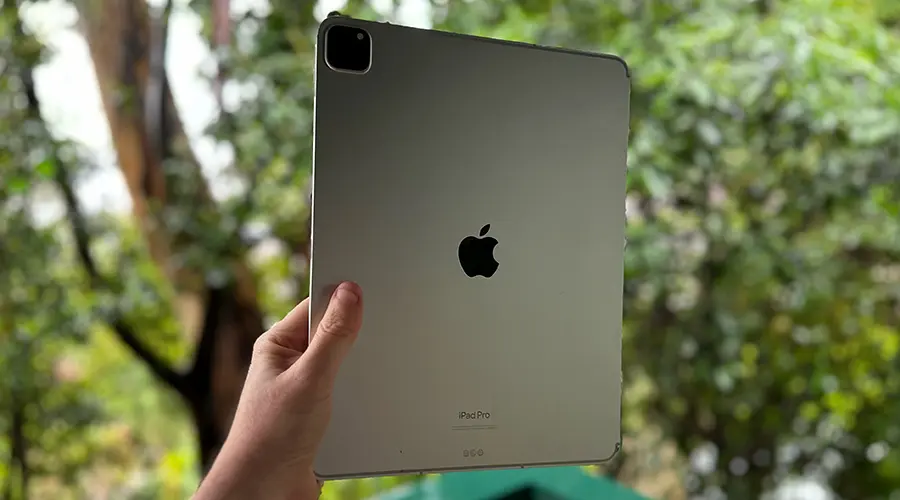
Image: Alex Kidman/Finder
It does work – and to an extent it's beyond my creative talents – but it does very much depend on how an individual app actually implements the underlying hover functionality. Given the split between both iPad model hardware and the sensitivity of Apple Pencil between the 1st and 2nd Gen models, it's likely that some apps may skip out on hover optimisations entirely.
On the camera front, the FaceID-capable camera still resides on the portrait side of the iPad, which can lead to some issues if you're holding the sides while trying to verify yourself. It's also a curious step because Apple's shifted the portrait camera on the new 10th generation model to the landscape side, although that model doesn't have to include FaceID in its mix.
At the rear, Apple packs in dual cameras with a 12MP wide and 10MP ultrawide sensor in play. Big tablets are still a somewhat painful way to shoot stills or video, although if you do need to it's certainly capable.
The underlying M2 processor can encode in ProRes substantially faster too if that's part of how you work, but it's hard not to think that you'd optimally shoot on a proper camera (or even an iPhone 14 Pro) and use the 6th Gen iPad Pro for video editing rather than capture.
Battery: Lives up to its claims, but its claims aren't great for a "Pro" device
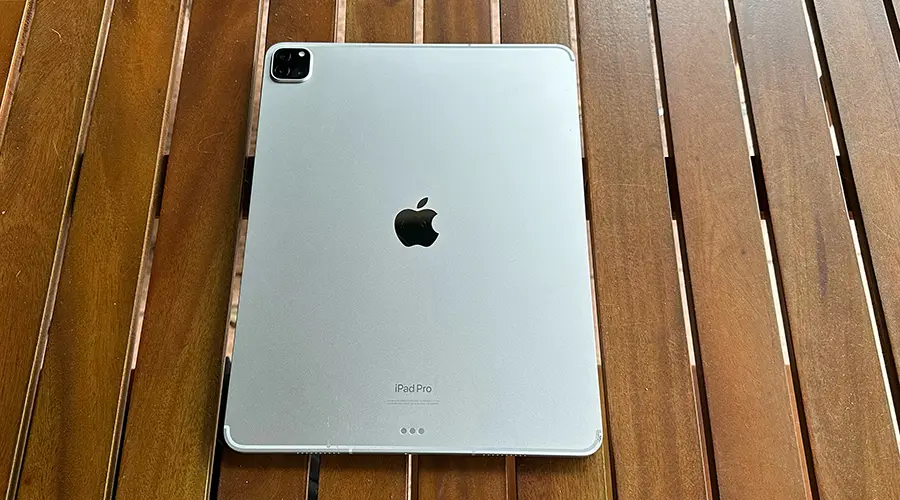
Image: Alex Kidman/Finder
When Apple made its jump from Intel to its own "Apple Silicon" processor systems with the first M1 chip, battery life was one cited reason for the shift. It's absolutely the case that the M1 and M2 MacBooks have far greater battery life than their earlier Intel counterparts.
In the iPad world, however, Apple's never made that claim. Name an iPad model and Apple will claim "up to" 10 hours of battery life for it.
The iPad Pro is no different, with Apple claiming up to 10 hours of web surfing or video watching, or up to 9 hours if you're using the 5G-enabled Wi-Fi+Cellular model using a mobile data connection. It feels a bit weird that the larger 12.9-inch model, which you'd think could pack in a lot more battery capacity, doesn't stretch further, although presumably that Mini-LED screen does sap a bit more power along the way.
Any figure labelled as "up to" is naturally one that's open to number abuse, because 2 minutes is heading "up to" 10 hours, but it's very far from it.
So far – and at the time of writing I've been testing the 6th Gen iPad Pro for a little over 5 days to be transparent – it mostly can live up to those claims, but as always it will depend on what you're doing with it.
In a straight line YouTube test – not that you'd buy the 6th Gen iPad Pro just to watch people's cat videos, to be clear – I could manage up to 9 hours of battery life.
It's not hard to see that Apple's claim for up to 10 hours should be achievable depending on your precise app use.
What's worth thinking about here is comparable battery life, and especially if you're in the Apple apps ecosystem, because the M1 or M2 powered MacBook lineups claim – and can achieve – a whole lot more battery life.
Again, usage will impact those, but unless you really specifically need that Apple Pencil and touch compatibility in your workflow, a MacBook Pro will last a whole lot longer – and in many cases, be a whole lot less expensive too.
Should you buy the Apple iPad Pro 6th Gen?
- Buy it if you need a productivity-centric tablet (and can afford it).
- Don't buy it if you mostly just want a simple tablet, or need the full flexibility of a MacBook.
Apple has long pushed the line that the iPad Pro is an entirely suitable laptop replacement with added security because it controls the App Store with an iron glove. Sure, it's wrapped in fancy Liquid Retina velvet, but it's an iron glove nonetheless.
That's been a harder sell to date, because limitations within the operating system and hardware have made it a less compelling option than simply opting for a similarly priced MacBook if you're in the Apple space, or Windows machine if you're not.
With the M2 powering the 12.9-inch iPad Pro, that becomes a more tenable argument, although far from a settled one. The iPad Pro is quite expensive for a tablet, and even more so if you want or need to equip it with Apple's official keyboard and Apple Pencil accessories.
For the 1TB 12.9-inch Wi-Fi model as tested, you'd be looking at $3,399, and that's before adding the $219 Apple Pencil or the $579 Magic Keyboard. Which means (amongst other things) that I'm writing this review on a machine that costs $4,197.
That's 14-inch MacBook Pro money right there, or indeed quite a bit more than the cost of an M2 13-inch MacBook Pro or MacBook Air.
On the other side of the equation, while the display is gorgeous, if you just want a tablet for your social doom scrolling or Apple Arcade games, the 6th Gen iPad Pro is total overkill; you'd be much better off with the iPad Air if you really must have a bit more power, or the still available, cheaper 9th Generation iPad.
Pricing and availability
The Apple iPad Pro 6th Gen retails in Australia in 11-inch or 12.9-inch sizes, with pricing starting at $1,399 for the 11-inch model and $1,899 for the 12.9-inch model.
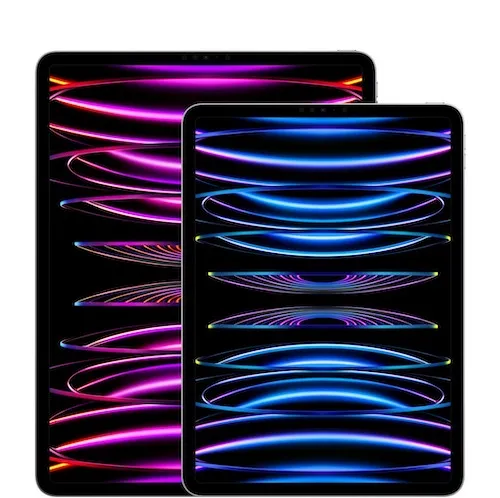
Specifications
General
16GB RAM on models with 1TB or 2TB storage
Connectivity
Storage
256GB
512GB
1TB
2TB
Miscellaneous
How we tested
Apple loaned me a Silver 1TB Wi-Fi+Cellular 12.9-inch iPad Pro for review. At the time of writing, I've tested it for a little bit under a week (because of the review embargo) through standard benchmarks, battery testing and with the also loaned Apple Pencil 2nd Gen and Magic Keyboard for iPad peripherals.
I have extensive experience with Apple's iPad platform stretching all the way back to the very first generation iPad, at a point where Apple really only thought of it as a way to consume content.
As a product reviewer I've got more than 20 years of experience covering the consumer tech space including all Apple products released in that time frame. I'm a multi-time Australian IT Journo award winner, including winner of the 2022 Best Reviewer award.
